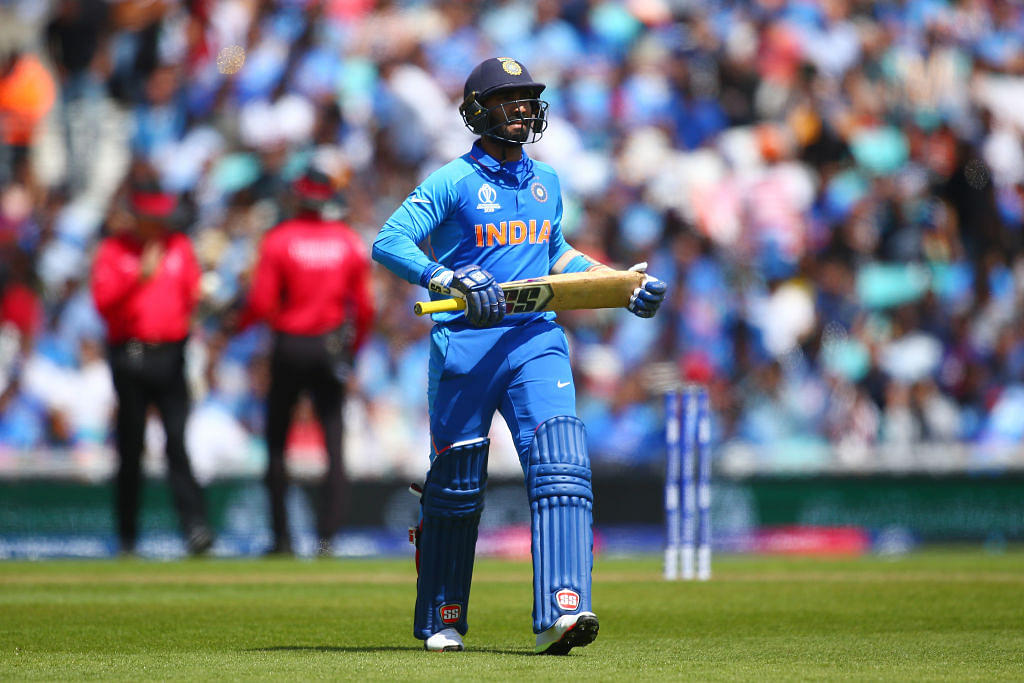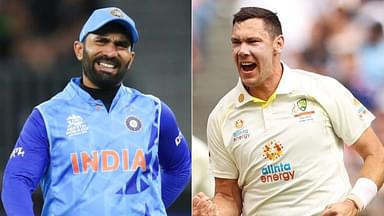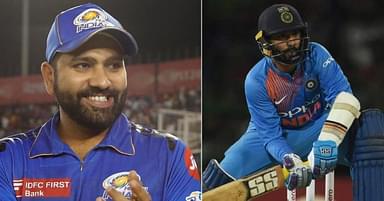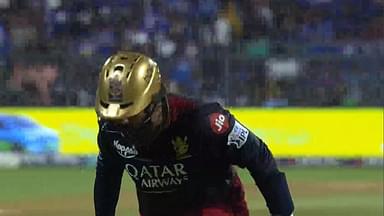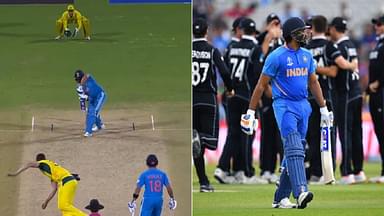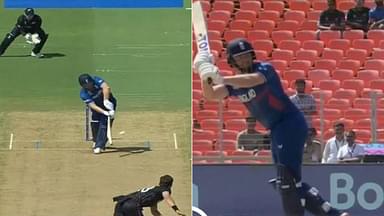Dinesh Karthik over MS Dhoni: The Indian team’s ploy of sending in Dinesh Karthik ahead of MS Dhoni received severe criticism.
Advertisement
“To go a long way in a tournament like this, you need to be flexible especially going with the situation of the game. You can’t have a set batting order,” India captain Virat Kohli was quoted as saying a day before the first semi-final of the ongoing ICC Cricket World Cup 2019 between India and New Zealand.
While Kohli hailed Indian batting lineup’s flexibility, perhaps it was the same flexibility which let them down at Old Trafford yesterday. After being reduced to 5/3 in a 240-run target, Indian team management decided to send Dinesh Karthik ahead of former India captain and current wicket-keeper batsman Mahendra Singh Dhoni.
In a situation which was tailor made for Dhoni to get his eye in and feet moving with his jaw-dropping defense, him not coming out to bat was the last thing Indian fans wanted especially after losing Rohit Sharma, Virat Kohli and Lokesh Rahul for a run each.
For all we know, the team management had intentions of displaying another episode of flexibility (as they did throughout this World Cup in an arguable manner) but it seemed they didn’t cast the right person for the job. Not questioning Dinesh Karthik’s selection here (that calls for a different debate altogether), but him being given the role he was given was a drastic change in his job profile at a pivotal juncture.
Why India were wrong in sending Dinesh Karthik over MS Dhoni
In the recent times, Karthik had done well in finishing matches in both ODIs and T20Is. He might have played cameo roles but was successful in taking India past the victory line from situations when victory seemed distant. Karthik’s last three single-digit scores before the World Cup had come in situations when the top-order had collapsed.
Just when he was expected to play the anchor role in the past, Karthik succumbed to pressure. Coming in to bat at 25/2 in the sixth over against West Indies at North Sound in 2017, Karthik scored 2 (19). Against Sri Lanka at Dharamsala in the same year, Karthik came in to bat at 2/2 in the fifth over only to score 0 (18).
Dhoni? Injured? Should be here otherwise.
— Harsha Bhogle (@bhogleharsha) July 10, 2019
The third instance of Karthik’s woes during batting collapses was recorded in January this year when he scored 0 (3) after being sent in to bat at 33/3 in the 11th over. Knowing that Karthik had been susceptible against the moving ball, there was not much sense in promoting him up the order against the likes of Trent Boult, Matt Henry and Lockie Ferguson.
“It’s horses for courses, we have got enough ammunition…”
Much like some other terms which have done the rounds in the Kohli-Ravi Shastri era, “flexibility” has become the latest entrant. Apparently, it was coach Shastri who laid emphasis on flexibility in the Indian team before this World Cup.
“It’s horses for courses, we have got enough ammunition,” Shastri was quoted as saying in an interview with CricketNext before the World Cup. In another interview with Cricbuzz, Shastri had also opined on demoting Kohli depending on the conditions.
Whether saving Dhoni till the end came from the same school of thought or not, only the team management knows. If it did, it has it in it to be questioned.
Too late to hold one end together
Speaking during the post-match press conference after getting eliminated from this World Cup, Kohli disclosed that Dhoni was given the role of holding one end together. Citing Dhoni’s struggle to get going from the word go of late, giving him the anchor role wasn’t a bad ploy. However, the timing of the same surely was.
In the general run of things, the anchor role is given to someone who bats in the top-order and not at No. 7. And this isn’t an observation in the “hindsight” but more of common sense. In what was otherwise an exceptional tournament for the Indian team across departments, this decision will be etched as a chink in the amour in their 2019 World Cup campaign.

